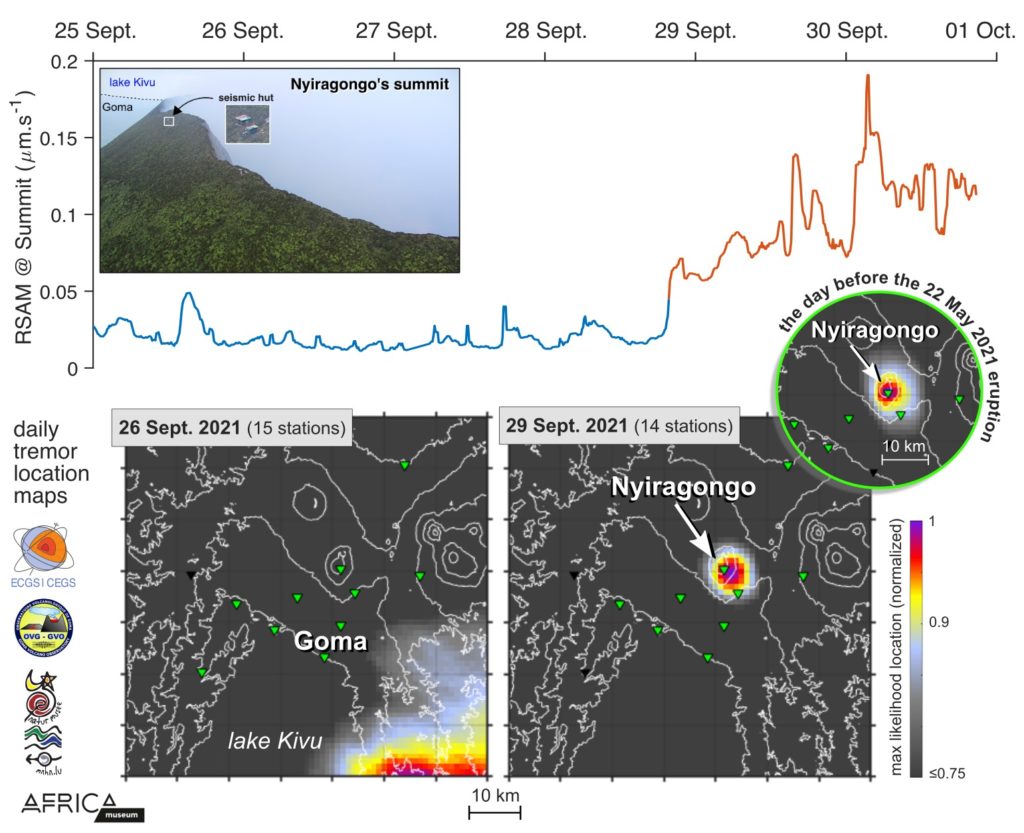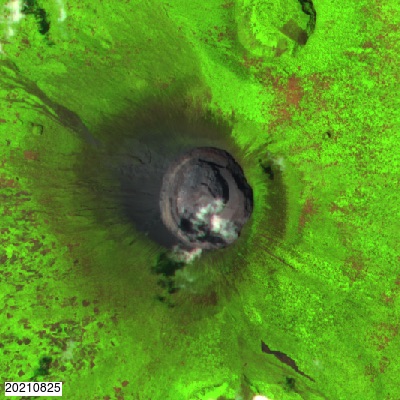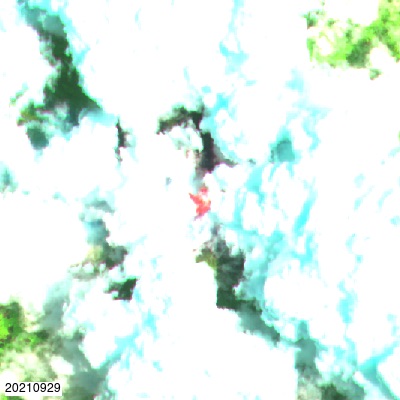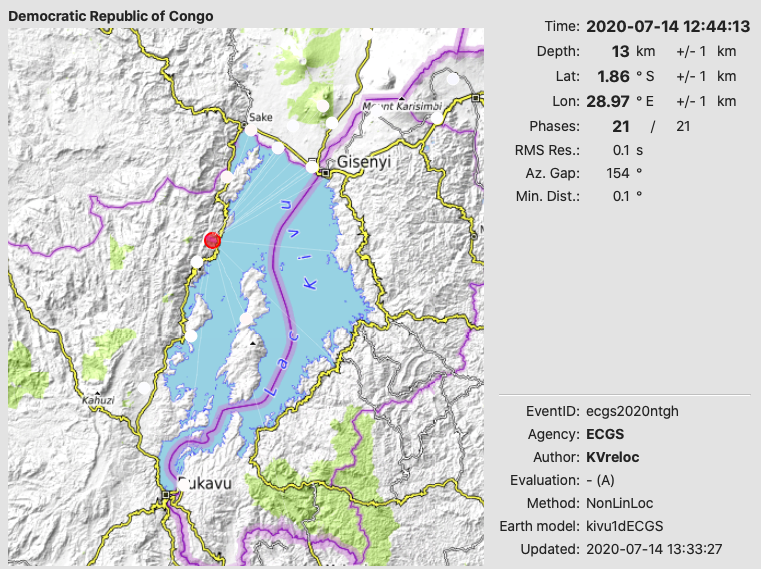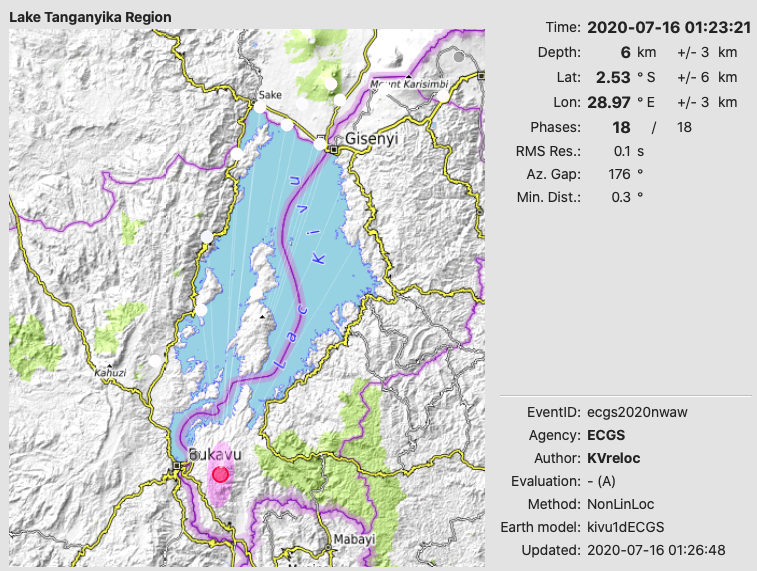The renewal of Nyiragongo’s lava lake activity inferred from Sentinel-2 observations is confirmed by seismic measurements through the local seismic network KivuSNet (Oth et al., SRL, 2017). Top panel: 10-min RSAM (Real-time Seismic Amplitude Measurement) at the summit station (broadband station deployed in a seismic hut close to Nyiragongo’s rim, see inset) in the frequency band [0.4-1] Hz, known to be the dominant frequency content of low-frequency continuous tremor generated by the lava lake activity (before the May 2021 eruption). Bottom panels: Daily location maps for 26 September (left) and 29 September (right) of the continuous seismic tremor in the same frequency band derived from a source-scanning location algorithm using ambient noise measurements recorded at all stations across the network (see Barriere et al., GRL, 2017). No persistent low-frequency tremor originating from Nyiragongo’s crater has been detected since the flank eruption on 22 May 2021 and the associated disappearance of the lava lake. Since 28-29 September 2021, the maximum likelihood location of the ambient seismic noise indicates that a shallow seismic tremor source centered on Nyiragongo’s crater is back.
View of Nyiragongo’s crater by Sentinel 2 on the 25th August and 29th September 2021. Lava is today visible again.
Please click here to access the French version of this post on the news page of georiska.africamuseum.be

